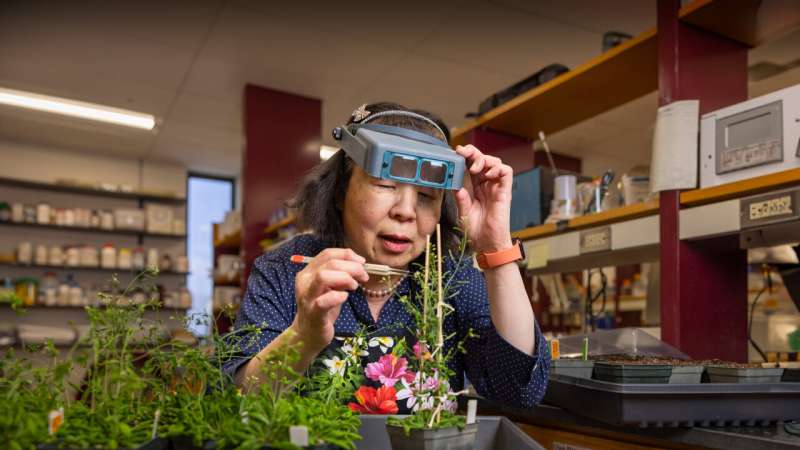Research conducted by an international team from the University of Massachusetts Amherst and Shandong Agricultural University has made significant strides in understanding plant pollination mechanisms, potentially leading to the development of new crop species. Published on November 21, 2025, in the journal Science, the study sheds light on how plants recognize and reject pollen from different species, a process crucial for agricultural diversity and food security.
One of the central challenges in plant breeding is the phenomenon known as “interspecific incompatibility” (ISI), which prevents the fertilization of one species by pollen from another, even if they are closely related. This mechanism is essential for avoiding inbreeding but also restricts the ability to create hybrids that could possess improved traits. A team led by Alice Cheung, a Distinguished Professor of Biochemistry and Molecular Biology at UMass Amherst, has focused on the Brassicaceae family, which includes commonly consumed vegetables like cabbages, broccoli, and kale.
Cheung and her team aimed to unravel the mechanisms behind ISI, a process that has remained poorly understood. They discovered that a specific protein, SRK, plays a crucial role in how plants communicate during pollination. This protein recognizes a chemical signal known as SIPS found on pollen from other Brassica species. When SRK detects SIPS, it triggers a response that leads to the rejection of incompatible pollen.
The researchers also identified the involvement of another enzyme, FERONIA, which collaborates with the SIPS-SRK interaction to create a reactive chemical known as ROS. This reaction effectively blocks the entry of unwanted pollen into the pistil, the reproductive part of the flower responsible for seed development.
Cheung’s team has proposed a new breeding strategy that could help overcome the current barriers to crossing distantly related species within the Brassicaceae family. By understanding and manipulating the mechanisms of ISI, the research opens avenues for developing crops that may have enhanced nutritional profiles or improved resistance to diseases.
The implications of this work are far-reaching, as it not only enhances our understanding of plant biology but also holds promise for increasing agricultural productivity. As food security becomes an increasingly pressing issue worldwide, such advancements could prove vital in the quest for sustainable solutions.
For further details, refer to the study by Yunyun Cao et al., titled “Pan-family pollen signals control an interspecific stigma barrier across Brassicaceae species,” published in Science. The findings underscore the potential of innovative plant breeding techniques to reshape agricultural practices in the future.
